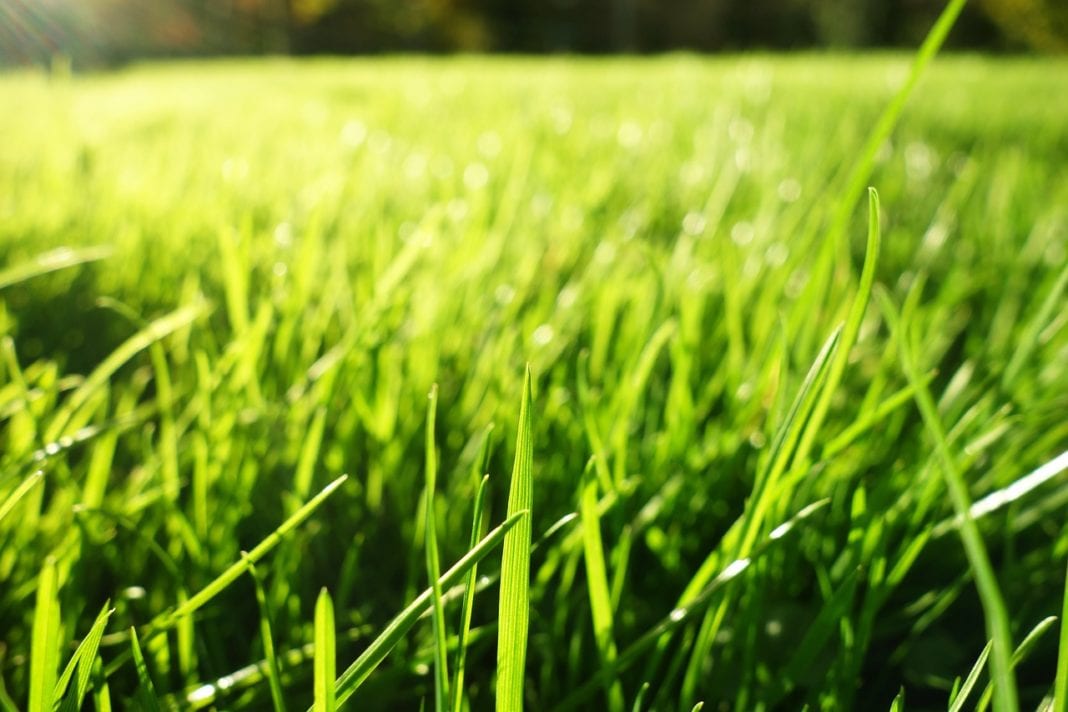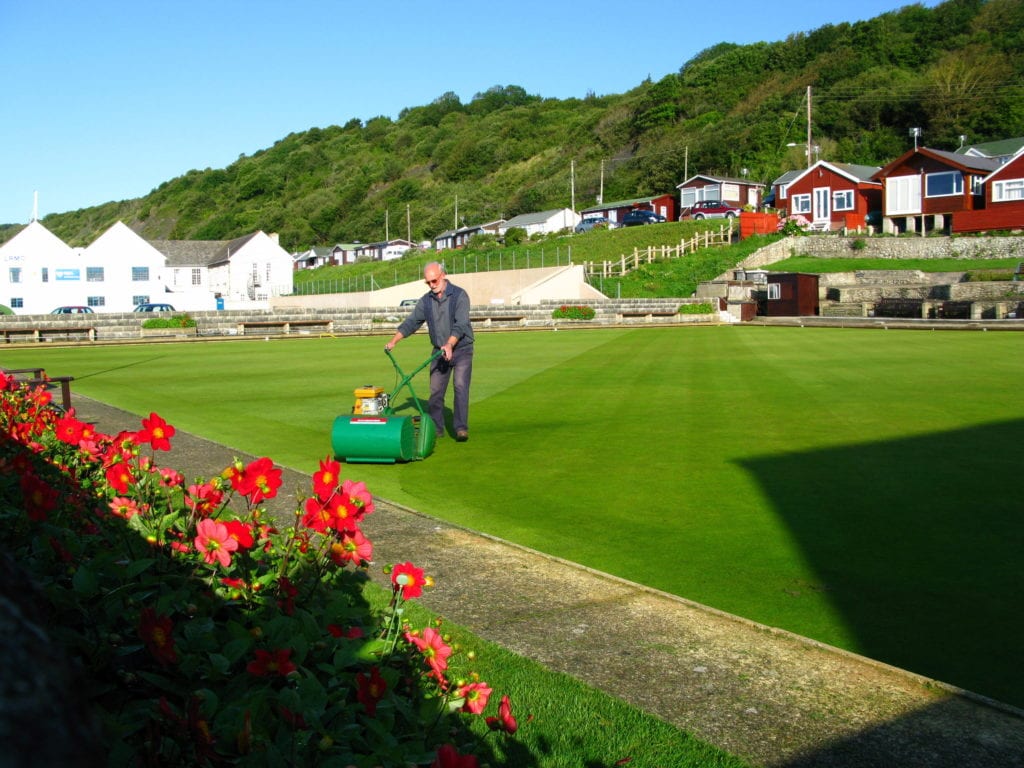Maintaining a healthy lawn requires regular care and attention. Here are some tips for achieving a healthier lawn:
- Mowing: Set your lawnmower to the appropriate height for your grass type and mow regularly. Avoid cutting more than one-third of the grass height at a time. Taller grass shades the soil, reducing weed growth and promoting healthy root development.
- Watering: Water deeply and infrequently rather than shallow, frequent watering. Early morning is the best time to water, as it allows the grass to dry before evening, reducing the risk of disease.
- Aerate: Aerating your lawn by perforating the soil with small holes helps improve air, water, and nutrient penetration to the roots. This is especially beneficial for compacted soils.
- Fertilize: Apply the right type and amount of fertilizer for your grass type and local conditions. Follow recommended schedules and consider using organic or slow-release fertilizers for sustained nutrient release.
- Weed Control: Regularly inspect your lawn for weeds and take appropriate measures to control them. Hand-pulling, herbicides, or pre-emergent weed control can be effective.
- Overseed: Overseeding your lawn with grass seed helps fill in bare spots, improves grass density, and can help outcompete weeds.
- Dethatch: If your lawn has excessive thatch (a layer of dead grass and organic matter), consider dethatching to promote healthier grass growth.
- Grass Type Selection: Choose the right grass variety for your climate and soil conditions. Some grasses are better suited to specific regions and environments.
- Mulch Grass Clippings: Mulch your grass clippings rather than bagging them. This returns valuable nutrients to the soil.
- Pest Management: Keep an eye out for lawn pests such as grubs, and address infestations promptly with the appropriate control methods.
- Sunlight: Ensure that your lawn gets the right amount of sunlight. If you have shaded areas, consider planting shade-tolerant grass varieties.
- Edge the Lawn: Regularly edge the lawn to maintain defined borders and prevent grass from encroaching on flowerbeds and walkways.
- Soil Testing: Periodically test your soil to determine its pH and nutrient levels. This will help you make informed decisions about fertilization and soil amendments.
- Use Organic Practices: Consider organic lawn care practices, such as using organic fertilizers, compost, and natural pest control methods, which are less harmful to the environment.
- Avoid Heavy Foot Traffic: Limit heavy foot traffic on your lawn, as it can compact the soil and damage the grass.
Remember that a healthy lawn is a long-term endeavor. Consistency and regular maintenance are key to achieving and maintaining a lush and thriving lawn. Tailor your lawn care practices to your specific grass type and local conditions for the best results.
Ideally, the lawn should look beautifully flat and green. Do you also have the idea that the lawn should appear in bright green, but then you have more increased brownish spots that do not look so nice?
This does not have to be, with just a little more attention to the care of the lawn, you get a healthier green area.

Contents
Right soil
Choosing the right soil is crucial to a healthy lawn. After all, the soil is the foundation of the lawn and provides it with the nutritional values to help it turn a beautiful green.
If you make a wrong decision here, you will have to face problems from the very beginning, which you will have to deal with in the long run. Decisive factors for a healthy soil are its pH values, nitrogen values, potassium content and phosphorus values.
You can check the corresponding values with special kits and take measures to upgrade the soil. It can be useful to enrich the soil with nutrients, or to provide better irrigation.
Light is also a big influencing factor. Therefore, make sure that the soil is provided with sufficient light, so that the lawn is based on a healthy foundation.
Suitable fertilizers
Fertilizers can be a suitable measure if the soil is not naturally endowed with the necessary nutrients. Even in the event that you are lucky and the soil is very suitable, the addition of fertilizer can be useful in the long term, as the lawn draws the nutritional values from the soil.
When choosing the appropriate fertilizer, you should avoid chemical options as much as possible and rely on natural remedies. Although chemical fertilizers often promise faster and better results, in the long term damage can occur.
In the long term, the lawn can become virtually “dependent” on chemical fertilizers, as natural organisms are killed. To replenish the nutrients, you will have to resort to chemical fertilizers more and more and in higher doses.
Therefore, make the right decision from the beginning and rather avoid chemical fertilizers and use only natural products, which are much gentler to the soil and lawn.
Scarify
The lawn is a living organism and as such it needs to “breathe”. Admittedly, not in the same way as we humans do, but in the way that is ideal for plants. This means that the soil should be loosened so that the lawn has easier access to water and can better absorb nutrients from the soil.

For a healthier lawn, you can scarify it. For this purpose, there are special scarifiers that free the lawn from moss or older lawn debris. The soil is loosened overall and the lawn can “breathe” freely again.
Dethatching should be done about two to three times a year to rid the lawn of mulch and moss.
Watering
Of course, proper watering also plays a major role in a healthy lawn. Although in Europe we basically have no problems with natural irrigation through precipitation, especially in the summer months we have to make sure that the soil has enough water available.
It can be assumed that the lawn needs about 20 liters of water per cubic meter. In order to estimate the amount of rain, it is recommended to install a rain gauge.
If the rain gauge falls below this recommendation, supplemental watering is in order to maintain a healthy lawn.
It’s not just the quantity that matters, but also the timing of when the lawn is watered. In the summer, you should water the lawn in the morning hours. This way, the water will not evaporate due to the hot temperatures and will be absorbed by the soil to a higher degree.
Care should also be taken, of course, if the lawn is watered too much. Similar to a lack of water, of course, overwatering can also harm the lawn. Therefore, it is always necessary to maintain the perfect, with additional watering usually only necessary in the summer.
Perfect mowing
Did you know that the lawn in the summer can also suffer a kind of sunburn? The sun and the heat are very hard on the lawn and if it is cut too short, it is deprived of the necessary protective surface to defend itself against the sun.
The lawn does not have any special protection mechanisms and if it is exposed to the sun, it is beneficial if it is not cut too short.
If you are of the opinion that a particularly short lawn in the summer is useful, because it supposedly needs less water, you are actually harming the lawn. Therefore, it is better to mow the lawn less once and let it grow a little longer in the summer.
Clean cutting
The lawn mower is a good choice when it comes to cutting the lawn extensively. As previously pointed out, of course, the lawn should not be cut too short, and in addition to the frequency of mowing the lawn, the quality is also crucial if you want to get a healthy lawn.
Therefore, make sure that the lawn mower always has sharp blades and leads to a good cutting result.
However, it is even more important that the edges of the lawn are also cut cleanly. With the lawn mower you will have a lot of trouble to cleanly cut the lawn.
Fortunately, there is also the right device for this purpose, and with special lawn trimmers you can neatly process the edges of the lawn.
As an additional tip, it should be noted that the edges should be processed at the beginning. This has the advantage that the lawn mower will pick up the cut grass.
Remove weeds
Weeds are a general annoying enemy of the gardener. You invest any amount of time and also money in your garden only for the result to be threatened by wild growing weeds.
To preserve your healthy lawn, you should contain and remove the weeds early on. Should you be too patient here, the weeds can spread unchecked and control will become increasingly complicated.
A common cause of weeds spreading is a lack of nutrients, which leads to a weakening of the lawn. This provides a surface for the weeds to attack and they can take root in the affected weak areas. To prevent this, the soil should be supplied with sufficient nutrients throughout.
To remove the weeds, there are special weed cutters that you can use to pull the weeds out of the ground. In a similar way, scarifiers can also get to grips with the lawn.
If this does not produce the desired results, there are of course the chemical weed killers, but they should only be the last resort. Better, on the other hand, are electric weed killers that expose the weeds to high heat.
Demoss
One particular form of weed that poses dangers to a healthy lawn is moss. Moss overlays the turf and cuts off the lawn’s nutrient supply.
The causes for the spread of moss here are similar to the weeds. A lack of nutrients and oxygen lead to a general weakening of the lawn, which promotes the spread of moss.
Too little light or low pH can also encourage moss growth.
To eliminate the causes, it is advisable to scarify the lawn and mow it at regular intervals. However, here too, the lawn should not be cut too short. A length of four to five centimeters is a good length so that it is sufficiently protected from moss infestation.
Mend dead areas
If you are now faced with the problem that the lawn no longer shines fresh and green, but has brown spots, then you should not leave the lawn to itself. Intervene and repair the affected diseased areas.
The first thing to do is to use a rake and rake the surface of the lawn. In order to give the healthy lawn more space and light, you should remove the dead grasses.
After removing the affected areas, you should touch up with a reseeding.


